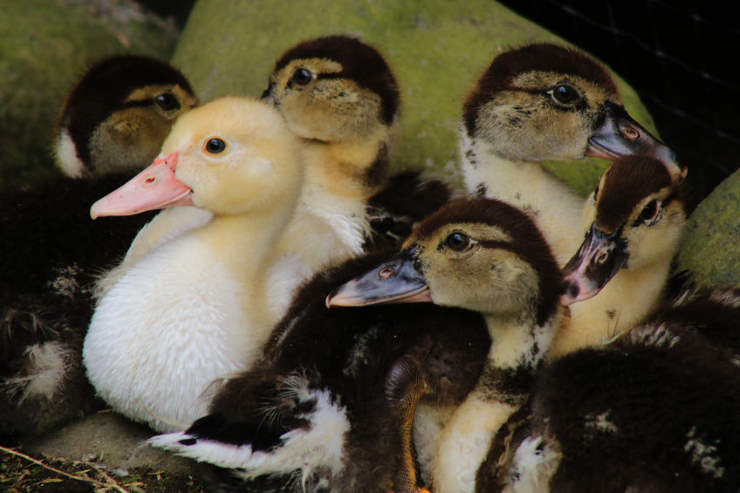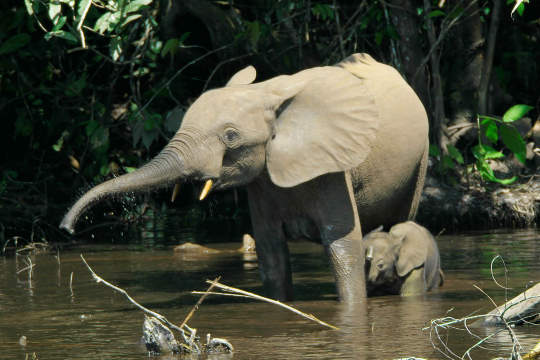Do you think you know what a species is? If you see two different animals, they belong to two different species. Or do they? Is this an “ugly” duckling in the picture, or is it just a different kind of bird?

When I talk about species or speciation, I often pause thinking about how deep I should explain it. On the surface, term species appears to be precisely defined. I know that often even biologists fall into thinking it is. Yet it isn’t.
Many definitions of species exist:
- The most classic is the biological species concept, which states that species is a group of organisms that can interbreed with each other and produce fertile offspring.
- If you are passing a biology test and a question asks what species is, most likely, this is the definition they want. Please don’t get caught if you are reading this on your phone during a test. You may, however, already noticed the first glitch: the above definition only applies to organisms with sexual reproduction. When dealing with asexually reproducing organisms, other species concepts mat come to rescue.
- Genealogical species concept says that species is a group of organisms in which each of its members is more closely related to each other that to any other organism.
- This species concept applies to asexually reproducing organisms, such as bacteria. However, it isn’t perfect either, and you’ll see below why.
- Phylogenetic species concept claims that species is a group of organisms that is distinct from other groups and share a common ancestor.
Besides the above ones, there are other species concepts as well. For example, morphological that categorizes animals based on their traits or ecological species concept, which looks at what niches organisms occupy and how they compete for resources with others. I will not dive deep into them since they are commonly used on their own. However, their true power lies in the ability to supplement other definitions in specific uses.
Problems with the most popular definitions of species
The reason why there are so many species concepts is that they all have their shortcomings. Each inventor of a new definition wanted to address the gaps that the previous one did not cover, yet, in most cases, they managed to create more problems than to solve.
Biological concept
I already stated that the biological species concept could not be applied to asexually reproducing organisms. That, however, can be justified with a notion that we use it only when it makes sense.
We must also close our eyes to the fact that individuals of closely related species do interbreed with a varying degree. We can exclude sterile hybrids, such as tigons and ligers. By definition, species must interbreed and produce fertile offspring.
However, quite often, in nature, closely related species produce fertile offspring, which is especially common in plants. That might be okay, but the problem is that there is no cutoff point.

One more problem with the biological species concept is that it is limited in time-space, thus, impractical in the real world. The concept does not state that the organisms must interbreed. They must be able to do so. For example, grey wolves in North America do not interbreed with wolves in Europe, yet they are the same species. You could test it by bringing two animals from both places to a lab, but what if they don’t find each other attractive or are too stressed after the trip?
Similarly, we also cannot compare organisms that are separated by a large amount of time. For example, Homo erectus is a direct ancestor of us, Homo sapiens. But, are we distinct species? We can’t test it with biological species concept, which is why other species definitions come to rescue.
Phylogenetic concept
The phylogenetic species concept defines species based on their resemblance to each other and on their evolutionary family tree. Most of this, however, relies on a precise reconstruction of the evolutionary tree, which may be imprecise or impossible. Good news, it works with both sexually and asexually reproducing organisms and also let us define already extinct species.
Genealogical concept
Genealogical species concept states that organisms of species must be more closely related to each other than to any other individual of an outside group. Let me explain how it works with a thought experiment.
Let’s say I want to find what species I belong to, so I start with the smallest possible group: me and my immediate offspring. I cannot consider myself and my kids a distinct species, because I am as closely related to my sister as to my kids. So, we now have to include my sister in our new species. That means we must include my wife’s brother, as well. He is equally close relative to my kids, as my sister is. But he is as close relative to me as most of the people in our country; thus, we should include a large number of people in our “new” species.
I can go further, but quite soon, we will stop at one point where we don’t have to include anyone new. It so happens to be a point when we have included all the humans on the planet. We are closer relatives to each other than any of us is to chimps.
That, of course, asks for a lot of calculations, but at least the concept applies to both sexually and asexually related organisms. Besides, a lot of calculations, bases on genetic data, is something that computers can do well.
The problem is that there may still be glitches. For example, often a small population of larger species can be genetically more closely related to their local sister species, than to a distant population of their own species. But again, we should not apply species concepts without thinking, and we still have other definitions to go to.
How geneticists define species
Much of the above is much easier if you have genetic data about the organisms. You might think that genetics enter the field of defining species with new concepts, but they aren’t really. What they do is they find a genetic proof within already existing species concepts.
For example, the biological species concept seeks to answer whether two groups of animals breed with each other. The genetic data can help answer that question. Genetic information also allows us to reconstruct evolutionary trees and find relatedness depending on how similar is their DNA.

While genetic advances let us identify new species easier, yet it leads to another problem — taxonomic inflation.
It is an immense increase in the number of species that there are, and it mainly happens because new genetic findings allow us to promote sub-species to the level of species. Subspecies are groups of animals that differ more or less in their appearance of physiology, yet still, count as the same species under one species concept or the other.
This highlights a general problem in species classification regardless of what method is used. Speciation, a process in which new species evolve, is an ever ongoing process. Our ancestors Homo erectus did not find out one day that their kids are different and should now be called Homo sapiens. It happened gradually and you can see the difference only if you look over an extended amount of time.
There isn’t a specific point in time where species become separate, yet taxonomists deal with it as if there were. Two groups of animals are strictly either the same species or not. No one claims that honeybee and wasp are 100% distinct, yet Western honeybee and Eastern honeybee are only 99% distinct species. But maybe they should?